
OR
How the first life on Earth survived its biggest threat — water
Published On: December 14, 2020 08:10 AM NPT By: Republica | @RepublicaNepal
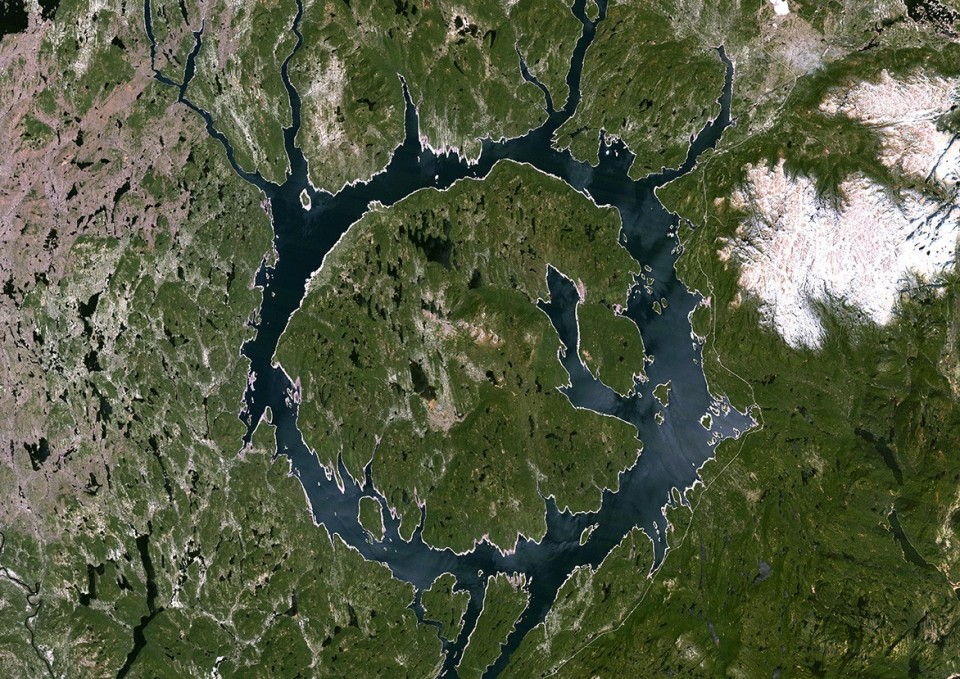
Living things depend on water, but it breaks down DNA and other key molecules. So how did the earliest cells deal with the water paradox?
KATHMANDU, Dec 14: On 18 February next year, a NASA spacecraft will plummet through the Martian atmosphere, fire its retro-rockets to break its fall and then lower a six-wheeled rover named Perseverance to the surface. If all goes according to plan, the mission will land in Jezero Crater, a 45-kilometre-wide gash near the planet’s equator that might once have held a lake of liquid water.
Among the throngs of earthlings cheering on Perseverance, John Sutherland will be paying particularly close attention. Sutherland, a biochemist at the MRC Laboratory of Molecular Biology in Cambridge, UK, was one of the scientists who lobbied NASA to visit Jezero Crater, because it fits his ideas about where life might have originated — on Mars and on Earth.
The choice of landing site reflects a shift in thinking about the chemical steps that transformed a few molecules into the first biological cells. Although many scientists have long speculated that those pioneering cells arose in the ocean, recent research suggests that the key molecules of life, and its core processes, can form only in places such as Jezero — a relatively shallow body of water fed by streams.
That’s because several studies suggest that the basic chemicals of life require ultraviolet radiation from sunlight to form, and that the watery environment had to become highly concentrated or even dry out completely at times. In laboratory experiments, Sutherland and other scientists have produced DNA, proteins and other core components of cells by gently heating simple carbon-based chemicals, subjecting them to UV radiation and intermittently drying them out. Chemists have not yet been able to synthesize such a wide range of biological molecules in conditions that mimic seawater.
The emerging evidence has caused many researchers to abandon the idea that life emerged in the oceans and instead focus on land environments, in places that were alternately wet and dry. The shift is hardly unanimous, but scientists who support the idea of a terrestrial beginning say it offers a solution to a long-recognized paradox: that although water is essential for life, it is also destructive to life’s core components.
Surface lakes and puddles are highly promising, says David Catling, a planetary scientist at the University of Washington in Seattle. “There’s a lot of work that’s been done in the last 15 years which would support that direction.”
Primordial soup
Although there is no standardized definition of life, most researchers agree that it needs several components. One is information-carrying molecules — DNA, RNA or something else. There must have been a way to copy these molecular instructions, although the process would have been imperfect to allow for mistakes, the seeds of evolutionary change. Furthermore, the first organisms must have had a way to feed and maintain themselves, perhaps using protein-based enzymes. Finally, something held these disparate parts together, keeping them separate from their environment.
When laboratory research into life’s origins started in earnest in the 1950s, many researchers assumed that life began in the sea, with a rich mix of carbon-based chemicals dubbed the primordial soup.
This idea was independently proposed in the 1920s by biochemist Alexander Oparin, in what was then the Soviet Union, and geneticist J. B. S. Haldane in the United Kingdom. Each imagined the young Earth as a huge chemical factory, with multitudes of carbon-based chemicals dissolved in the waters of the early oceans. Oparin reasoned that increasingly complicated particles were formed, culminating in carbohydrates and proteins: what he called “the foundation of life”.
In 1953, a young researcher named Stanley Miller at the University of Chicago in Illinois described a now-famous experiment that was seen as confirming these ideas1. He used a glass flask holding water to mimic the ocean, and another flask containing methane, ammonia and hydrogen to simulate the early atmosphere. Tubes connected the flasks, and an electrode simulated lightning. A few days of heating and electric shocks were enough to make glycine, the simplest amino acid and an essential component of proteins. This suggested to many researchers that life arose near the surface of the ocean.
But many scientists today say there’s a fundamental problem with that idea: life’s cornerstone molecules break down in water. This is because proteins, and nucleic acids such as DNA and RNA, are vulnerable at their joints. Proteins are made of chains of amino acids, and nucleic acids are chains of nucleotides. If the chains are placed in water, it attacks the links and eventually breaks them. In carbon chemistry, “water is an enemy to be excluded as rigorously as possible”, wrote the late biochemist Robert Shapiro in his totemic 1986 book Origins, which critiqued the primordial ocean hypothesis2.
This is the water paradox. Today, cells solve it by limiting the free movement of water in their interiors, says synthetic biologist Kate Adamala at the University of Minnesota in Minneapolis. For this reason, popular images of the cytoplasm — the substance inside the cell — are often wrong. “We are taught that cytoplasm is just a bag that holds everything, and everything is swimming around,” she adds. “That’s not true, everything is incredibly scaffolded in cells, and it’s scaffolded in a gel, not a water bag.”
If living things keep water controlled, then the implication, say many researchers, is obvious. Life probably formed on land, where water was only intermittently present.
Land start
Some of the key evidence in favour of this idea emerged in 2009, when Sutherland announced that he and his team had successfully made two of the four nucleotides that comprise RNA3. They started with phosphate and four simple carbon-based chemicals, including a cyanide salt called cyanamide. The chemicals were dissolved in water throughout, but they were highly concentrated, and crucial steps required UV radiation. Such reactions could not take place deep in an ocean — only in a small pool or stream exposed to sunlight, where chemicals could be concentrated, he says.
Sutherland’s team has since shown that the same starter chemicals, if they are treated subtly differently, can also produce precursors to proteins and lipids4. The researchers suggest that these reactions might have taken place if water containing cyanide salts was dried out by the Sun, leaving a layer of dry, cyanide-related chemicals that was then heated by, say, geothermal activity. In the past year, his team has produced the building blocks of DNA — something previously thought implausible — using energy from sunlight and some of the same chemicals at high concentrations5.
This approach has been extended by biochemist Moran Frenkel-Pinter at the NSF–NASA Center for Chemical Evolution in Atlanta, Georgia, and her colleagues. Last year, they showed that amino acids spontaneously linked up to form protein-like chains if they were dried out6. And those kinds of reaction were more likely to occur with the 20 amino acids found in proteins today, compared with other amino acids. That means intermittent drying could help to explain why life uses only those amino acids, out of hundreds of possibilities. “We saw selection for today’s amino acids,” says Frenkel-Pinter.
Wet and dry
Intermittent drying out can also help to drive these molecular building blocks to assemble into more-complex, life-like structures.
A classic experiment along these lines was published in 1982 by researchers David Deamer and Gail Barchfeld, then at the University of California, Davis7. Their aim was to study how lipids, another class of long-chain molecule, self-organize to form the membranes that surround cells. They first made vesicles: spherical blobs with a watery core surrounded by two lipid layers. Then the researchers dried the vesicles, and the lipids reorganized into a multi-layered structure like a stack of pancakes. Strands of DNA, previously floating in the water, became trapped between the layers. When the researchers added water again, the vesicles reformed — with DNA inside them. This was a step towards a simple cell.
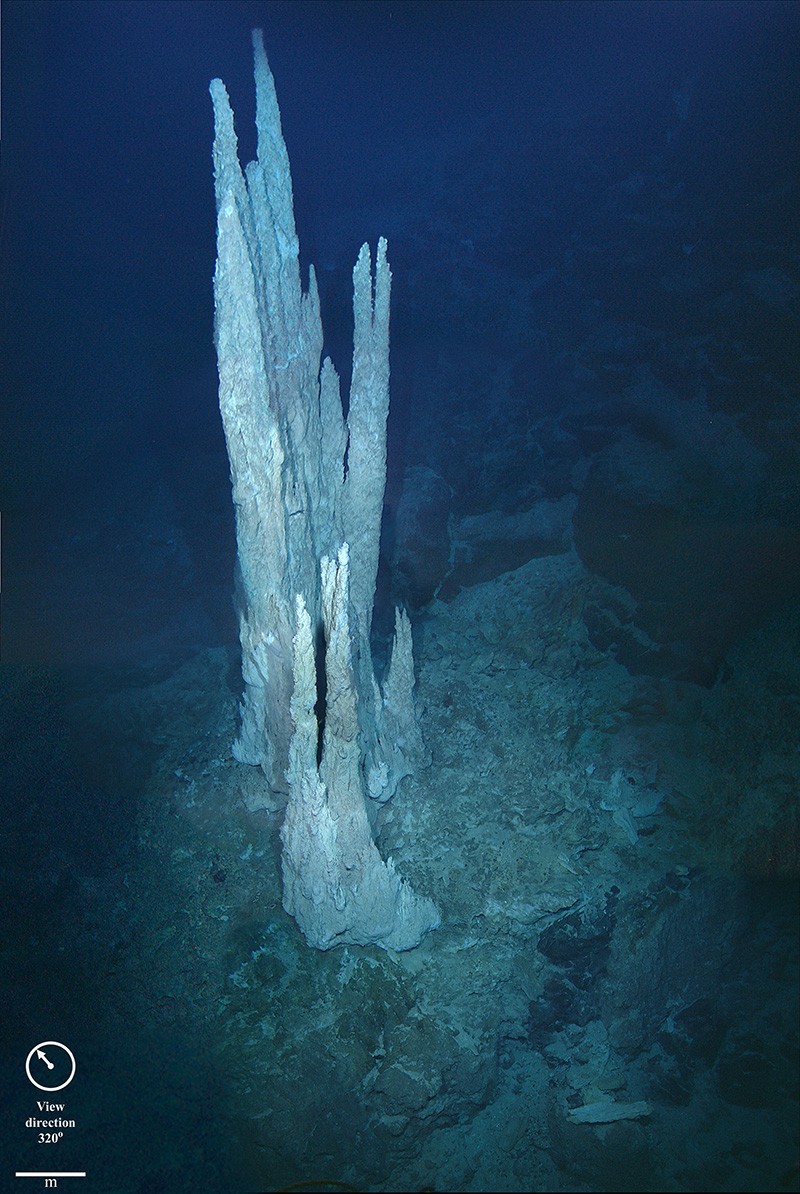
One scenario about the origin of life suggests it started around vents on the sea floor that spew hot alkaline waters, such as the ‘Lost City’ formation in the Atlantic Ocean.Credit: Image courtesy D. Kelley and M. Elend/University of Washington
“These wet–dry cycles are everywhere,” says Deamer, who is now at the University of California, Santa Cruz. “It’s as simple as rainwater evaporating on wet rocks.” But when they are applied to biological chemicals such as lipids, he says, remarkable things happen.
In a 2008 study, Deamer and his team mixed nucleotides and lipids with water, then put them through wet–dry cycles. When the lipids formed layers, the nucleotides linked up into RNA-like chains — a reaction that would not happen in water unaided8.
Other studies are pointing to a different factor that seems to be a key part of life’s origins: light. That’s one of the conclusions coming from the team of synthetic biologist Jack Szostak at Massachusetts General Hospital in Boston, which works with ‘protocells’ — simple versions of cells that contain a handful of chemicals, but can grow, compete and replicate themselves. The protocells display more-lifelike behaviours if they are exposed to conditions similar to those on land. One study, on which Adamala was a co-author, found that the protocells could use energy from light to divide, in a simple form of reproduction9. Similarly, Claudia Bonfio, now also at the MRC Laboratory of Molecular Biology, and her colleagues showed in 2017 that UV radiation drives the synthesis of iron-sulfur clusters10, which are crucial to many proteins. These include those in the electron transport chain, which helps to power all living cells by driving the synthesis of the energy-storage molecule ATP. The iron–sulfur clusters would break apart if they were exposed to water, but Bonfio’s team found they were more stable if the clusters were surrounded by simple peptides 3–12 amino acids long.
Water, but not too much
Such studies have given momentum to the idea that life began on a well-lit surface with a limited amount of water. However, there is still debate over how much water was involved, and what part it played in starting life.
Like Deamer, Frenkel-Pinter argues that wet–dry cycles were crucial. Dry conditions, she says, provided an opportunity for chain molecules such as proteins and RNA to form.
But simply making RNA and other molecules is not life. A self-sustaining, dynamic system has to form. Frenkel-Pinter suggests that water’s destructiveness could have helped to drive that. Just as prey animals evolved to run faster or secrete toxins to survive predators, the first biological molecules might have evolved to cope with water’s chemical attacks — and even to harness its reactivity for good.
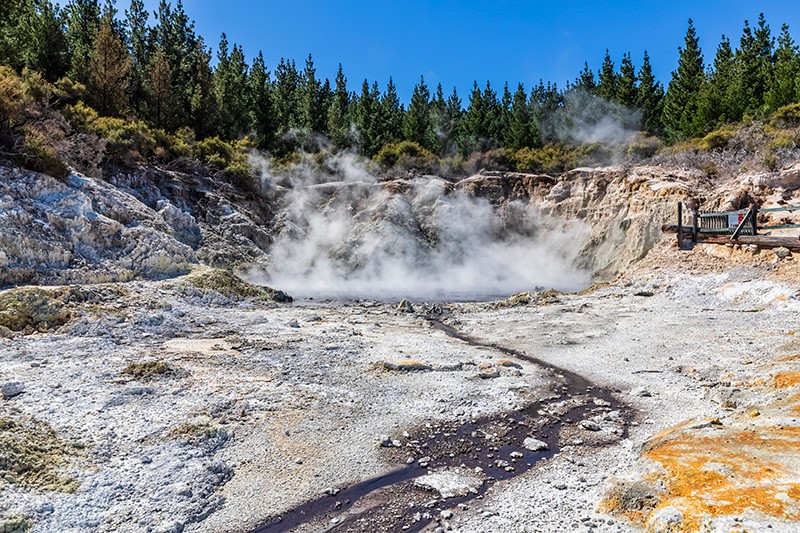
In a study at Hell’s Gate hot springs near Rotorua, New Zealand, samples from hydrothermal pools went through cycles of drying and rewetting, which promoted chemical reactions that produced RNA-like molecules.Credit: Westend61/Getty
This year, Frenkel-Pinter’s team followed up on its previous study6 showing that drying caused amino acids to link up spontaneously. The team found that their proto-proteins could interact with RNA, and that both became more stable in water as a result11. In effect, water acted as a selection pressure: only those combinations of molecules that could survive in water would continue, because the others would be destroyed.
The idea is that, with each cycle of wetting, the weaker molecules, or those that could not protect themselves by binding to others, were destroyed. Bonfio and her team demonstrated this in a study this year12, in which they attempted to convert simple fatty acids into more-complex lipids resembling those found in modern cell membranes. The researchers created mixtures of lipids, and found that the simple ones were destroyed by water, while the larger, more complex ones accumulated. “At some point, you would have enough of these lipids for them to form membranes,” she says. In other words, there might be a Goldilocks amount of water: not so much that biological molecules are destroyed too quickly, but not so little that nothing changes.
Warm little ponds
Where might all this have happened? On this point, there is a generational divide in the field. Many senior researchers are committed to one scenario or another, whereas younger researchers often argue that the question is wide open.
The open ocean is unviable, says Frenkel-Pinter, because there is no way for chemicals to become concentrated. “That’s really a problem,” agrees Bonfio.
An alternative marine idea has been championed since the 1980s by geologist Michael Russell, an independent researcher formerly at the Jet Propulsion Laboratory in Pasadena, California. Russell argues that life began in vents on the seabed, where warm alkaline water seeps up from geological formations below. Interactions between warm water and rocks would provide chemical energy that would first drive simple metabolic cycles, which would later start making and using chemicals such as RNA.
Russell is critical of Sutherland’s approach. “He’s doing all these fantastic bits of chemistry,” he says, but for Russell, none of it is relevant. That’s because modern organisms use completely different chemical processes to make substances such as RNA. He argues that these processes must have arisen first, not the substances themselves. “Life, it picks very particular molecules. But you can’t pick them from the bench. You’ve got to make them from scratch and that’s what life does.”
Sutherland counters that once RNA, proteins and so forth had formed, evolution would have taken over and enabled proto-organisms to find new ways to make these molecules and thus sustain themselves.
Meanwhile, many researchers have expressed scepticism about Russell’s alkaline-vent hypothesis, arguing that it lacks experimental support.
By contrast, chemical experiments that simulate surface conditions have made the building blocks of nucleic acids, proteins and lipids. “None of that synthesis exists in that deep-sea hydrothermal vent hypothesis. It just simply hasn’t been done, and possibly because it can’t be done,” says Catling.
Frenkel-Pinter is also critical of the vent idea, because the molecules she works with wouldn’t survive long in those conditions. “The formation of these protopeptides is not very compatible with hydrothermal vents,” says Frenkel-Pinter.
A possible solution was proposed in May by geochemist Martina Preiner, a postdoc at the University of Düsseldorf in Germany, and her colleagues. She argues that in the rocks beneath hydrothermal vents, heat and chemical reactions bind up water molecules or break them apart — creating dry spaces13. “There are rock–water interactions getting rid of the water to a certain extent,” she says. Intermittently, more seawater would trickle in, giving “something like a wet–dry cycling”. This ought to make the deep-sea rocks much more suitable for the formation of key molecules, argues Preiner, although she acknowledges this is still a hypothesis. “Of course, you still have to do the according experiments to prove that this could do certain reactions.”
At present, however, that evidence doesn’t exist. Meanwhile, experimental support is growing for the idea that life started in small bodies of water on land.
Sutherland favours a meteorite impact crater, heated by the Sun and by the residual energy of the impact, with multiple streams of water running down the sloping sides, and finally meeting in a pool at the bottom. This would have been a complex, 3D environment with mineral surfaces to act as catalysts, where carbon-based chemicals could have been alternately dissolved in water and dried out in the Sun. “You can say with some degree of confidence we need to be on the surface, we can’t be deep in the ocean or 10 kilometres down in the crust,” says Sutherland. “Then we need phosphate, we need iron. A lot of those things are very easily delivered by iron–nickel meteorites.” The impact scenario has a further advantage: meteorite impacts shock the atmosphere, producing cyanide, says Sutherland.
Deamer has long championed a different suggestion: volcanic hot springs. In a study this year, he and his colleague Bruce Damer argued that lipids would have formed protocells in the hot waters14, as his earlier experiments indicated. The wet–dry cycles on the edges of the pools would have driven the formation and copying of nucleic acids such as RNA.
Deamer has conducted several experiments in modern volcanic hot springs to test his ideas. In 2018, his team showed that vesicles could form in hot spring water15, and even enclose nucleic acids — but they would not form in seawater. A follow-up study last year found that when the resulting vesicles were dried, nucleotides linked up to form RNA-like strands16.
Narrowing down the location where life started will require understanding of the broader picture of prebiotic chemistry: how the many reactions fit together, and the ranges of conditions under which they occur. That mammoth task has been attempted by a group led by chemist Sara Szymkuć, president of the start-up firm Allchemy in Highland, Indiana. The team published a comprehensive study in September that used a computer algorithm to explore how a vast network of known prebiotic reactions could have produced many of the biological molecules used in life today17.
The network was highly redundant, so key biological compounds could still form even if multiple reactions were blocked. For this reason, Szymkuć argues that it is too early to rule out any of the scenarios for where life originated. That will require systematically testing a range of different environments, to see which reactions occur where.
Beyond Earth
If experiments such as Sutherland’s do point the way to how life began on Earth, they can also help to explore where life might have started elsewhere in the cosmos.
Mars has attracted the most attention, because there is clear evidence it once had liquid water on its surface. The landing site for NASA’s Perseverance rover, the Jezero Crater, was chosen in part because it seems to have once been a lake — and could have hosted the chemistry Sutherland has studied. He helped to write a 2018 presentation to NASA led by Catling, which summarized the prebiotic chemistry findings and advised on where Perseverance should look. “We presented this chemistry and said this Jezero Crater, which is the one they eventually chose, is the one where there was the highest likelihood of this chemistry playing out,” says Sutherland.
It will be two months before Perseverance reaches Mars — and years before the samples it collects are returned to Earth by an as-yet-unnamed future mission. So, there is still a long wait before we find out whether Mars harbours life, or if it did so billions of years ago. But even if it did not, it might reveal traces of prebiotic chemistry.
The best case, says Catling, is that Perseverance finds complicated carbon-based molecules in the layers of Martian sediment, such as lipids or proteins, or their degraded remains. He also hopes for evidence of wet–dry cycles. This might come in the form of carbonate layers that formed when a lake dried and refilled many times. He suspects that “life didn’t get particularly far on Mars”, because we haven’t seen any obvious signs of it, such as clear fossils or carbon-rich black shales. “What we’re looking for is pretty simple, maybe even to the point of being prebiotic rather than the actual cells themselves.”
It could be that Mars took only the first few chemical steps towards life, and did not go all the way. In that case, we might find fossils — not of life, but of pre-life.
Credit: nature
You May Like This
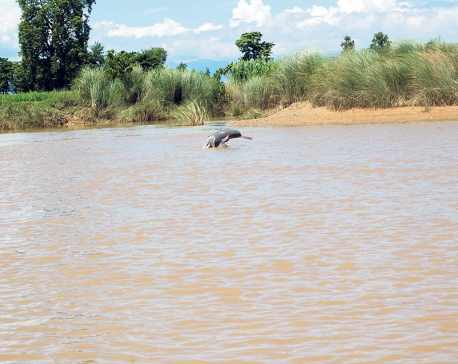
Water pollution a big threat to aquatic life in Tikapur
TIKAPUR, March 11: The increasing pollution in various rivers and streams of Tikapur has threatened the aquatic life there. This has... Read More...
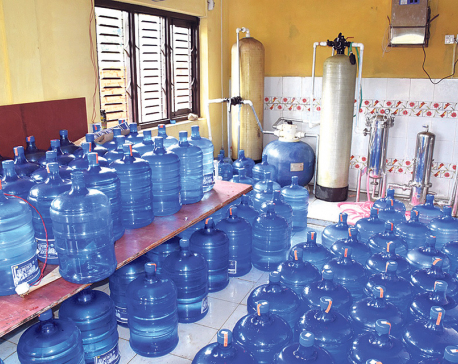
State-owned water body introduces bottled mineral water in jars
BANEPA, August 28: Nepal Water Supply Corporation has started sale of bottled mineral water under the brand name ‘NWSC Pani’. The... Read More...

Water Supply Department to build ponds to collect rain water
KATHMANDU, Feb 4: The Department of Water Supply and Sewerage is set to launch a project for collecting rain water... Read More...





Just In
- UML Chair Oli appeals vote for Nembang
- APF seizes 152 sacks of onions and 32 units of mobile phones from Dhansuha
- 80 civil servants left in the lurch as MoFAGA places them in reserve pool
- Weather Alert: Storm likely in Lumbini and Sudurpaschim
- NOC investing Rs 3 billion to construct fuel storage plants of over 9,000 kl capacities in Bhairahawa
- Reflecting on a festive journey filled with memories and growth
- Dalit sexual and gender minorities lack representation within their own communities and groups
- Nagdhunga-Sisnekhola tunnel breakthrough: Beginning of a new era in Nepal’s development endeavors














Leave A Comment